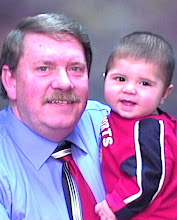David L Tetterton
IPT287 Internet Safety Assignment
1. What articles did you choose to read?
2. “Things as They Really Are”
3. “Technology and a House of Learning”
2. What were the three most important things you learned from the readings?
1. That we need to be in better control of the media (Internet, TV and video games) in our homes.
2. That inappropriate material on the TV has jumped from 67% in 1998 to 75% in 2000, and
3. Making friends on the internet or having a relationship with someone other than your spouse is not appropriate.
3. Describe the video resources you watched (name, content, hosted location/website, etc.).
1. I watched several websites and learned quite a bit. Some of the information was already known.
1. http://www.ikeepsafe.org/assets/videos/?vid=fauxpaw_video
2. http://www.ikeepsafe.org/iksc_kids/
3. http://www.webwisekids.org/index.asp?page=Katie_parents
4. http://www.pbs.org/wgbh/pages/frontline/kidsonline/view/main.html
4. What are the three most important things you learned from the video resources you viewed?
1. That our children hide what they view from us.
2. We as parents and educators need to be more persistence in knowing what is being viewed.
3. We need to also respect our children’s privacy.
5. Describe who you talked with (no names are needed - just a brief description of age).
1. I spoke with my wife and daughter. Wife: 49 years old, Daughter: 16 years of age
6. Describe what you shared and what the reaction of the person was.
1. We together watched several of the videos above, after I had watched them. The reaction of the wife was one of disbelief, while the daughter knew of the hazards, because of a previous incident on the net.
7. What will you do differently now that you have completed this assignment?
1. I will try to be more involved in my children’s behavior on the internet. I will also be careful of the types of individuals they come in contact with.
8. How can you use what you have learned to have a positive influence on those you teach?
1. The positive influence I can best have towards those I teach is by being informed of the hazards that are on the internet and explain and show them what can happen. Let them know that I care about them and that they are important to me.

